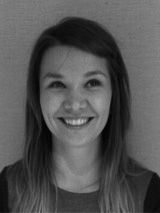News
Who will pay my pension someday...?
Information event on pension rights for Internationally Mobile Researchers.
PhD Funding through the TUM Graduate School
STIBET Program of the DAAD // Internationalization voucher of the TUM-GS
Biomedical Applications for Cancer Treatment
April 23rd, 2015 I 04.00-06.00pm I Klinikum rechts der Isar I Pavillon Lecture Hall
Events
| Mo | Tu | We | Th | Fr | Sa | Su | |
|---|---|---|---|---|---|---|---|
| 18 | 27 | 28 | 29 | 30 | 1 | 2 | 3 |
| 19 | 4 | 5 | 6 | 7 | 8 | 9 | 10 |
| 20 | 11 | 12 | 13 | 14 | 15 | 16 | 17 |
| 21 | 18 | 19 | 20 | 21 | 22 | 23 | 24 |
| 22 | 25 | 26 | 27 | 28 | 29 | 30 | 31 |
Marika Kuschan, Dipl.-Phys.

Associated member of GSISH
Contact Details
IMETUM - Zentralinstitut für Medizintechnik
Technische Universität München
Boltzmannstraße 11
85748 Garching b. München
Germany
Phone: +49 (0)89.289.10958
Fax: +49 (0)89.289.10805
E-Mail: marika.kuschan@tum.de
Project Details
Project:
Motion Compensation in MRI and MRI-PET
Supervisors:
Prof. Dr. rer. nat. Axel Haase
Walter Kucharczyk, FRCPC, MD
Start of PhD-work at GSISH:
January 2012
Project Description:
Magnetic Resonance Imaging (MRI) has evolved into one of the most important imaging tools, which is used in clinical diagnosis. One of its major advantages is the excellent soft-tissue contrast. To receive high-resolution images, the acquisition time can take up to several tens of minutes. However, long acquisition times lead to strong motion sensitivity. This dependency results in less image quality with undesirable image artifacts or blurring, which often renders a complicated diagnosis. During the imaging process two types of motion occur, namely periodic motions like the more or less regular pulsing of the heart and more random movements of extremities, for example, which mostly appear from the unconsciousness or tightness of the muscles. Various methods have been developed to overcome motion sensitivity in MRI. Navigator techniques that detect and correct for motion in several applications, have been established since 1989, however increased scan times are necessary. External devices such as respiratory pillows or ECGs are used for motion triggering, although not all motions are amenable for external detection. This PhD project aims to gain in a motion compensation method of general adaptability for all motion types and easy integrability in clinical daily routine. Using a general approach, this can be extraordinary useful in all fields of NMR: spectroscopy, neuroimaging, cardio imaging, angiography, diffusion imaging and of course, patient monitoring. Motion compensation can also be useful in all kinds of hybrid imaging methods, including PET/MRI.
Publications:
Dregely I, Lanz T, Metz S, Mueller MF, Kuschan M, Nimbalkar M, Bundschuh RA, Ziegler SI, Haase A, Nekolla SG, Schwaiger M.
A 16-channel MR coil for simultaneous PET/MR imaging in breast cancer. published in Eur Radiol. (online at 2014 Oct 7., but ahead of print, DOI: 10.1007/s00330-014-3445-x)
Poster:
Kuschan M, Meisinger C,Eiber M J, Resmer F, Müller M, Lanz T, Haase A, Schwaiger M, Nekolla S G. Characterisation of a PET-optimized MR-carotids coil for hybrid imaging. WMIC Annual Meeting 2014.
Personal Details:
For Curriculum Vitae of Marika Kuschan click here.
